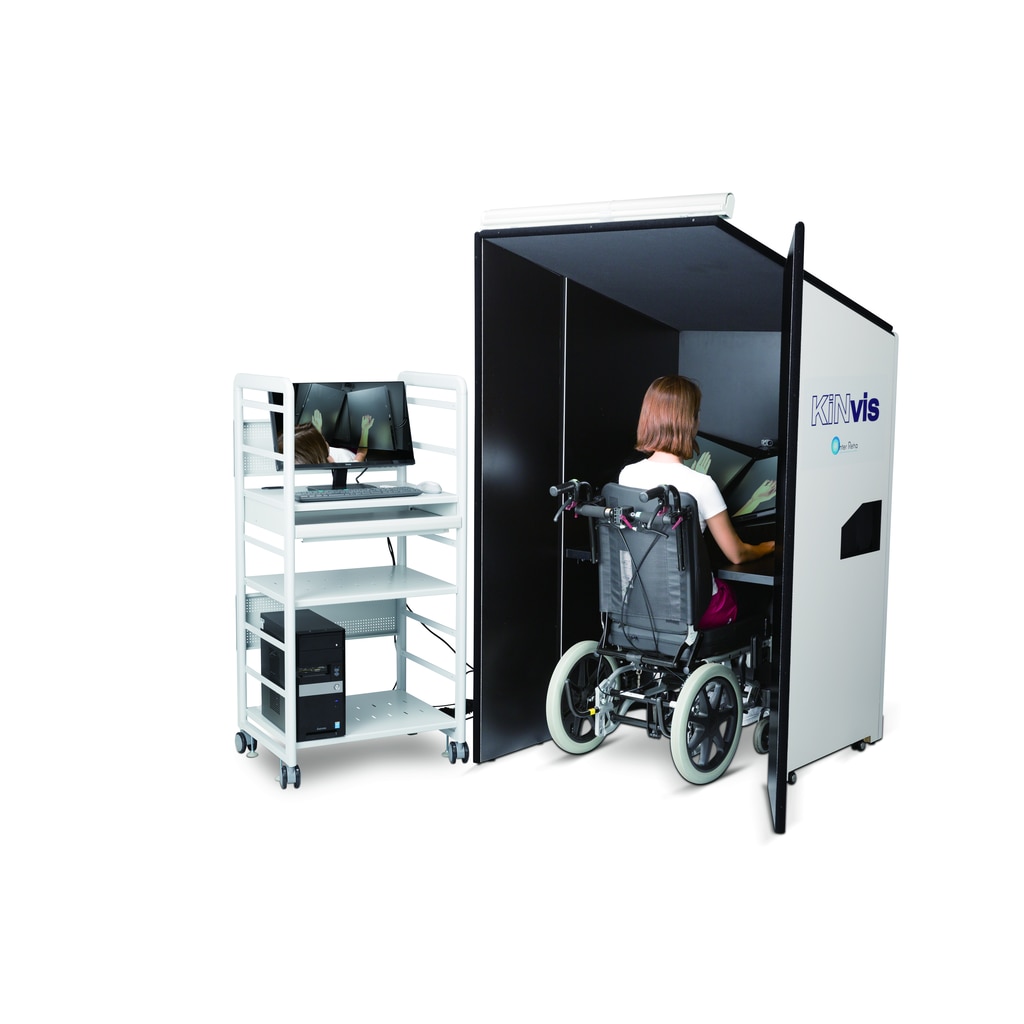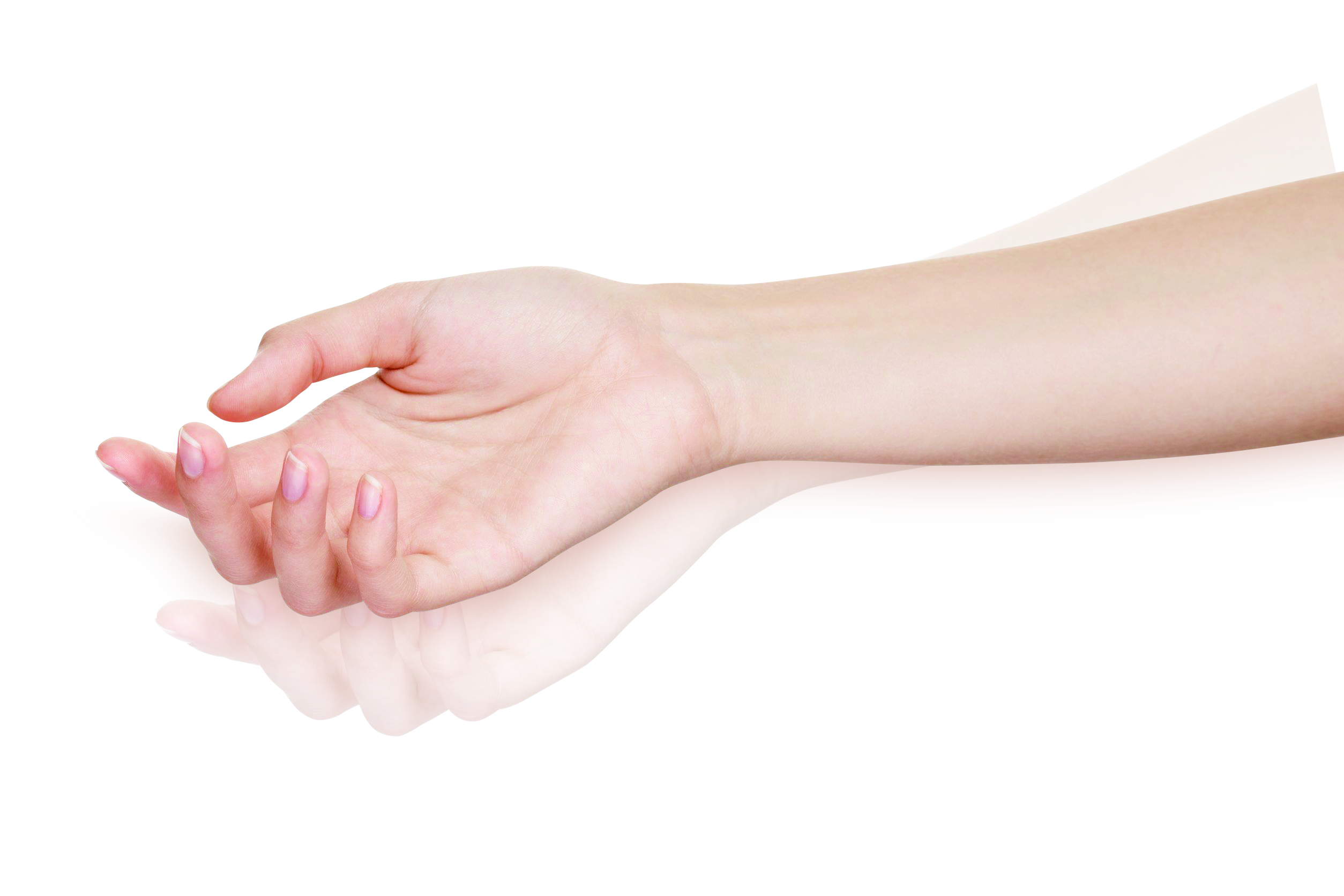Self-motion Illusion Induction System
KiNvis

A system designed to create the illusion that as if a paralyzed or sensory/motor-impaired upper limb is being moved.
KiNesthetic illusion induced by visual stimulation
"KiNvis" realizes a "visually induced self-motion illusion.
"Self-motion illusion refers to a sensation in which, despite no actual joint movement, it feels as though one's limbs are moving.
| Dimensions |
Main unit: 900 x 1200 x 1800 (mm) PC rack: 650 x 420 x 1100 (mm) |
| Power supply |
100V maximum power consumption: 10A |
| Basic OS | Windows10 |
Main features
Effects of Self-motion Illusion on the Body
・Reversing and replaying the motion video of the unaffected side on the paralyzed upper limb creates the illusion that the paralyzed hand is moving, generating motor intention.
・Induces a sense of body “Ownership” and a sense of “Motor Agency” for the paralyzed side.
・If skin sensation remains, combining it with tactile stimulation enhances the sense of sensory immersion (Ownership).
・Induces a sense of body “Ownership” and a sense of “Motor Agency” for the paralyzed side.
・If skin sensation remains, combining it with tactile stimulation enhances the sense of sensory immersion (Ownership).

Brain Activity Induced by Self-Motion Illusion
・The motion illusion activates neural circuits involved in motor execution.
・Self-motion illusion increases the excitability of the corticospinal tract.
・Self-motion illusion increases the excitability of the corticospinal tract.

Features of KiNvis
・Safe design with no moving parts.
・User-friendly software with an interactive GUI for easy clinical use.
・Facilitates Hebb’s rule through synchronization with external devices.
・User-friendly software with an interactive GUI for easy clinical use.
・Facilitates Hebb’s rule through synchronization with external devices.

CONTACT
Copyright © Inter Reha Co.,Ltd.
